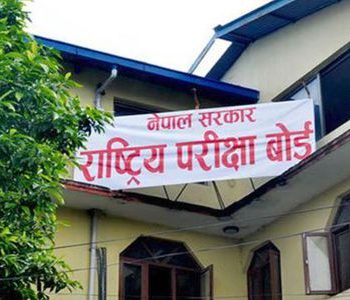Nepal’s banks prioritize loan recovery over new loans in January

KATHMANDU: As the second quarter comes to a close, commercial banks in Nepal are focusing on enhancing old loan recovery rather than disbursing new loans. With only 13 days remaining in the quarter, banks aim to boost profits by increasing recovery efforts and mitigating non-performing loans.
January, being the month for collecting principal and interest on old loans, sees banks strategically prioritizing recovery. The objective is to decrease non-performing loans, providing relief to the financial health of the banks. A reduction in non-performing loans would lead to a decrease in provisioning, consequently contributing to increased profits.
The banking sector has been under pressure since the first quarter of the current financial year, witnessing a 28.20 percent decline in profits. Economic contractions have impacted credit quality and industrial businesses, resulting in an increase in bad loans and a subsequent decline in bank profits.
Bankers anticipate that the proactive approach taken by banks in loan recovery, coupled with policy facilities from the central bank, will lead to a decrease in non-performing loans and a potential profit increase in the first quarter. However, concerns persist about the potential rise in non-banking assets due to provisions related to securities auctions and blacklisting by the Nepal Rastra Bank.
There is apprehension that the economic contraction may impede bank recovery efforts. Despite increased liquidity in the banking system, loan disbursement has not seen growth due to unchanged interest rates. The banks are strategically working on loan expansion while gradually reducing interest rates, responding to the central bank’s directives to lower rates.
The central bank’s efforts to facilitate the stock market and real estate sectors through monetary reviews have resulted in increased demand for loans in these areas. However, the overall demand for loans in other sectors remains subdued.
To address the challenges posed by bad loans, the central bank has introduced facilities for rescheduling and restructuring loans. These measures aim to provide relief to borrowers facing difficulties. While these policies have eased pressure on banks, concerns persist about the impact of mortgage auction systems on bank recovery.
The recent revisions by the Nepal Rastra Bank, including changes in provisions related to interest rate capitalization and blacklisting, are being closely monitored by bankers. The central bank’s efforts to balance the interests of banks and financial institutions amid declining profits demonstrate ongoing regulatory adjustments to support the stability of Nepal’s banking sector.
Sunil KC, President of the Nepal Bankers Association, notes a paradox in the lending landscape where demand for loans is surging in the stock market and real estate sectors following the central bank’s monetary review. Although entrepreneurs are optimistic about decreasing interest rates, the broader demand for loans in other sectors remains sluggish.
Despite two interest rate cuts by banks in November, the overall demand for loans is yet to manifest, creating anticipation that it might increase soon. KC acknowledges the impact of the monetary review, bringing reduced interest rates and increased investable funds, particularly benefiting entrepreneurial ventures.
To address challenges posed by bad loans, the central bank has implemented measures to provide relief to borrowers through loan rescheduling and restructuring, introduced during the initial monetary policy review.
The National Bank has extended the facility to reschedule or restructure active loans across various sectors, including industries like hotels, restaurants, animal husbandry, construction, and education, among others, until the end of 2022.
In response to the changing economic landscape, the central bank has arranged a 5 percent loan loss provision for restructured and rescheduled loans. While the loan rescheduling policy has provided some relief to banks, they face pressure from the mortgage auction system introduced by the National Bank, altering arrangements related to auctions and guarantors.
Recent revisions by the central bank in provisions related to interest rate capitalization and blacklisting, through amendments to the integrated directive, have garnered attention. The central bank’s decision to extend the period for blacklisting from 35 to 90 days has raised concerns among bankers about potential implications for non-banking assets and the overall recovery process.
Moreover, the Nepal Rastra Bank (NRB) has demonstrated an interest in addressing the declining profits of banks and financial institutions by revising provisions related to interest capitalization of projects.
Through amendments to the integrated directive, the NRB allows the deduction of interest from completed projects in commercial operation from the interest capitalization fund (ICR), transferring it to the accumulated profit. These regulatory adjustments showcase ongoing efforts to balance the stability and growth of Nepal’s banking sector amid changing economic dynamics.













Facebook Comment